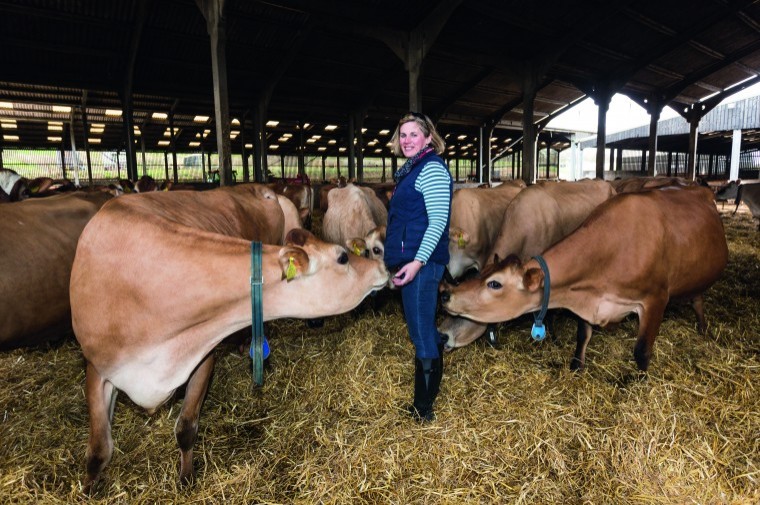The combine has been serviced and put to bed for this year and as we turn our thoughts to the evenings drawing in and inevitably winter coming our way, it is time to reflect on the year behind us. The weather always plays a huge part in farming but more so this current year, from the very wet winter to the scorching spring/summer followed by a very mixed end to August. The August bank holiday weekend was the coldest for over 40 years. Who said ‘global warming’ is getting worse?
Drilling new season grass is well under way and the forage harvester will be munching its way through the maize very shortly. The maize would appear to have revelled in the hot summer and is looking well. Time will tell how it yields. Let us hope that the maize clamps are brimming to compensate for the lack of grass to mow. It would appear that although we lack grass in the South East, we have made up for it with the weather this summer. Combining was finished at a record speed, with little grain being dried and yields not far adrift from previous crops. The north seems to have had the force of the weather a lot worse than we have. Combines were still rolling well into September and forage is being hauled into the South East to buffer our stocks.
Schools and universities are settling back into a new regime; it seems eerily quiet around the house without the banter from four children. I have certainly missed them since they returned. I must confess to enjoying lockdown. Facemasks appear to be the new trend around school. Hopefully, the weekly shopping bill will decrease fairly soon. It certainly needs to.
I was reading an article written by an old dairy farmer. He was talking to a young farmer and was telling him that when he wanted to buy a new tractor in 1965, he sold three freshly calved heifers to pay for it. The young farmer did not believe him. The answer was very true; admittedly he bred exceptional heifers and probably the rest of us would have had to sell four or five heifers to cover the cost of the tractor, but the problem was that the young farmer today would have to sell approximately 15 to 20 heifers to buy the equivalent tractor. The reason is that tractor prices are linked to the general economy, while dairy heifer prices are linked to the price of milk.
In agriculture we are repeatedly told that we cannot rely on handouts from the Government; we must become more efficient. So, the farmer in question decided to explore our country’s inefficiency.
He was asking “where all the money went”. He started milking in 1965 and sold his milk to the MMB (Milk Marketing Board) for 28.77d (pre-decimal money) per gallon. In today’s terms that’s approximately 12p per gallon or 2.64p per litre (ppl). His wife was particularly organised and kept records of how much the milkman charged to deliver a pint of milk. In June 1965 she paid 10 pence halfpenny per pint. That’s 84d (35p) per gallon or 7.7ppl. In simple terms, the customer paid the supplier three times what the supplier paid the farmer. Back then, the milk was delivered on an electric milk float and all the bottles were taken away for recycling. In 1995/6 farmers were paid an average of 24.335ppl and the retail price was approximately 36p per pint or 63.35ppl.
Today the price is 24ppl! If I go to Tesco or Sainsbury’s etc and buy four pints of milk it costs me 48 ppl, or so it claims on the shelf. So now the consumer only pays twice what the farmer gets. What about inflation? What is the spending value of the pound? Well a pound in 1965 bought as much as £10 in 1995 and £16.56 today. We can create a table to explain, see below.
So, rather than earning 24ppl, the dairy farmer should be on 40ppl to keep up with inflation. Interestingly, 1995 was the year of the 1995 Agricultural act. This was pushed through by the Conservative Party and the one thing it engulfed was the demise of the Milk Marketing board.
British dairy farmers formed another co-op (Milk Marque). Membership was in demand, with more than 90% of dairy farmers joining. The competition commission was then called and insisted that Milk Marque was broken up. The UK dairy industry was thrown to the dogs to fend for itself.
This is where we find ourselves today, an industry trying to sustain a living, working 365 days a year with no respite and the wolves at our door. If you look back at records this also applies to the beef, lamb and arable enterprises.
I do hope you are all safe and keeping well in these strange times.




